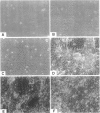Abstract
Nickel compounds are well established by epidemiologic studies as human carcinogens. Although the carcinogenicity of nickel compounds has been studied in experimental animals and in a variety of cultured mammalian cells, there are only sporadic reports of nickel-induced transformation of human cells. In attempts to study the mechanisms of nickel-induced carcinogenesis in human cells, an immortalized human osteoblastic cell line (HOS) that could not grow in soft agar or form tumors in athymic nude mouse was repeatedly treated with a water-soluble nickel compound (NiCl2) or a less water-soluble nickel compound crystalline (NiS). After three rounds of NiS treatment, there was an increase in anchorage-independent (AI) colony formation. This was not found in untreated or NiCl2-treated cells. Ten AI colonies obtained from NiS-treated cells were isolated. All of these clones showed changes in cell morphology, including the appearance of uniform polygon shape, growth in multilayers, and heavy staining with Giemsa. Most of these clones were retested for their ability to grow in soft agar and showed growth efficiencies of 5 to 50%. It has been shown by other investigators that aggregate growth is well correlated with tumorigenic potential in viral or chemical transformants of HOS cells. Four of seven tested NiS-transformed clones were able to form large aggregates compared to their untransformed counterparts, and continued to proliferate in aggregate form when they were plated on 0.9% agar. Current investigations focus on the molecular and genetic changes induced by nickel compounds in these human cells.
Full text
PDF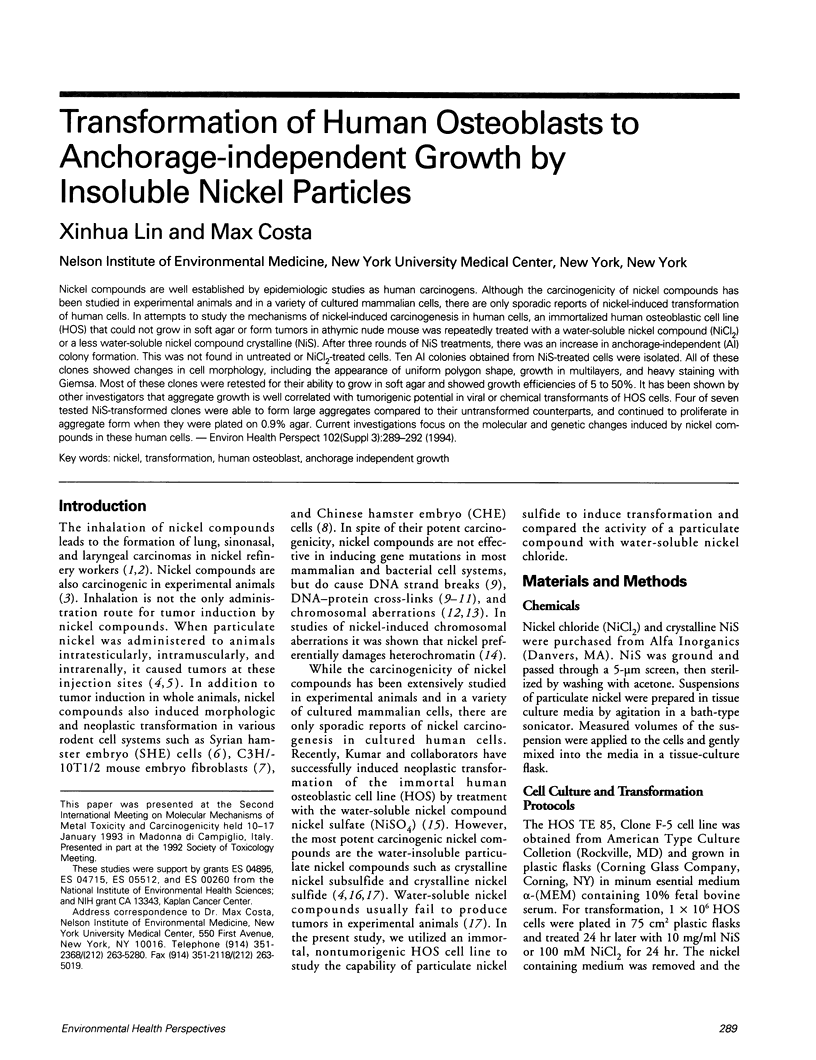
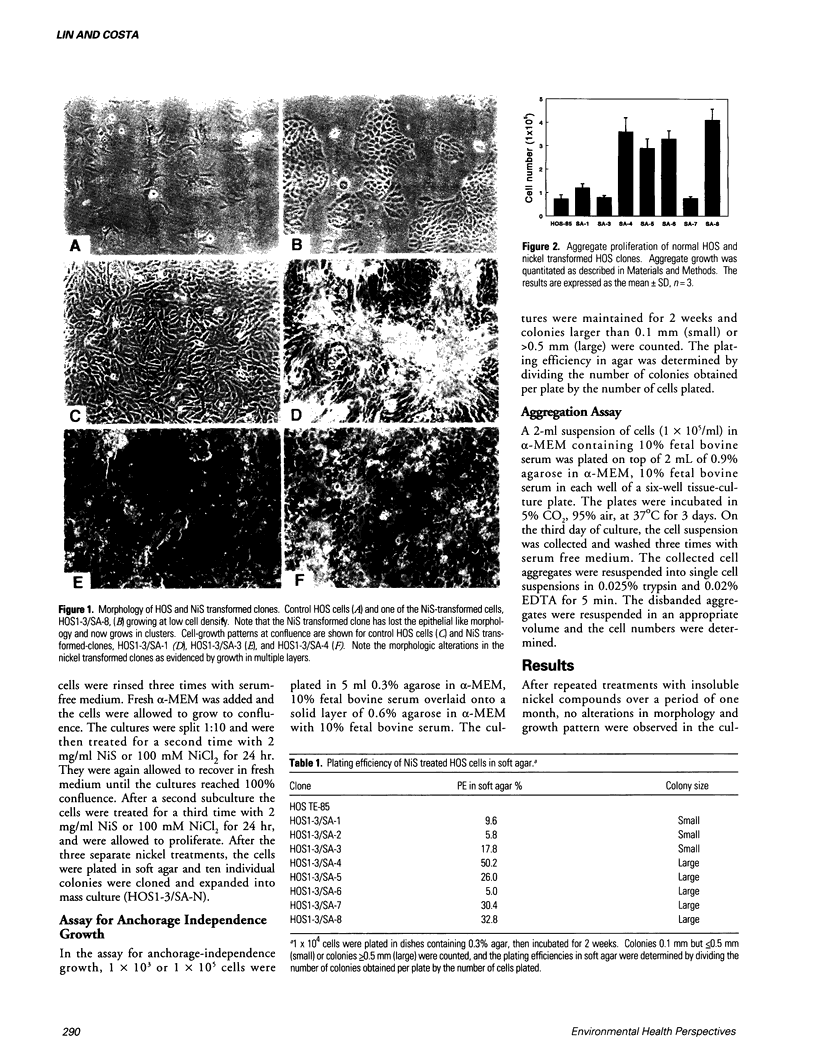
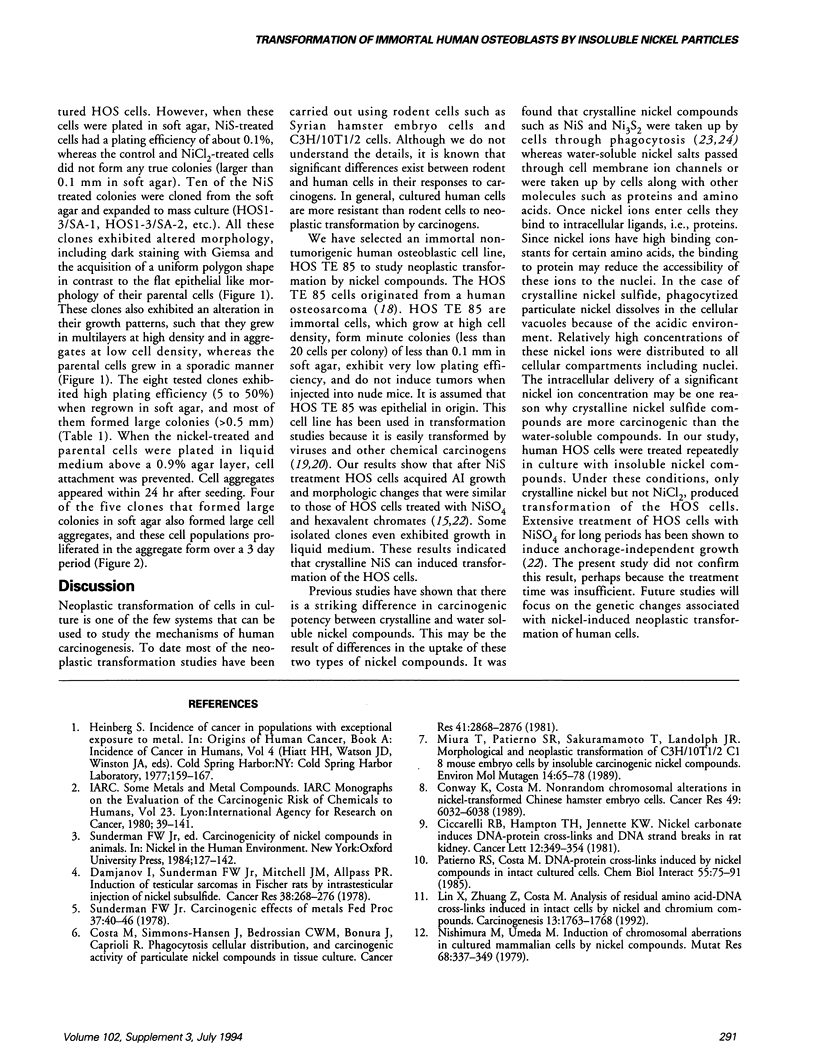
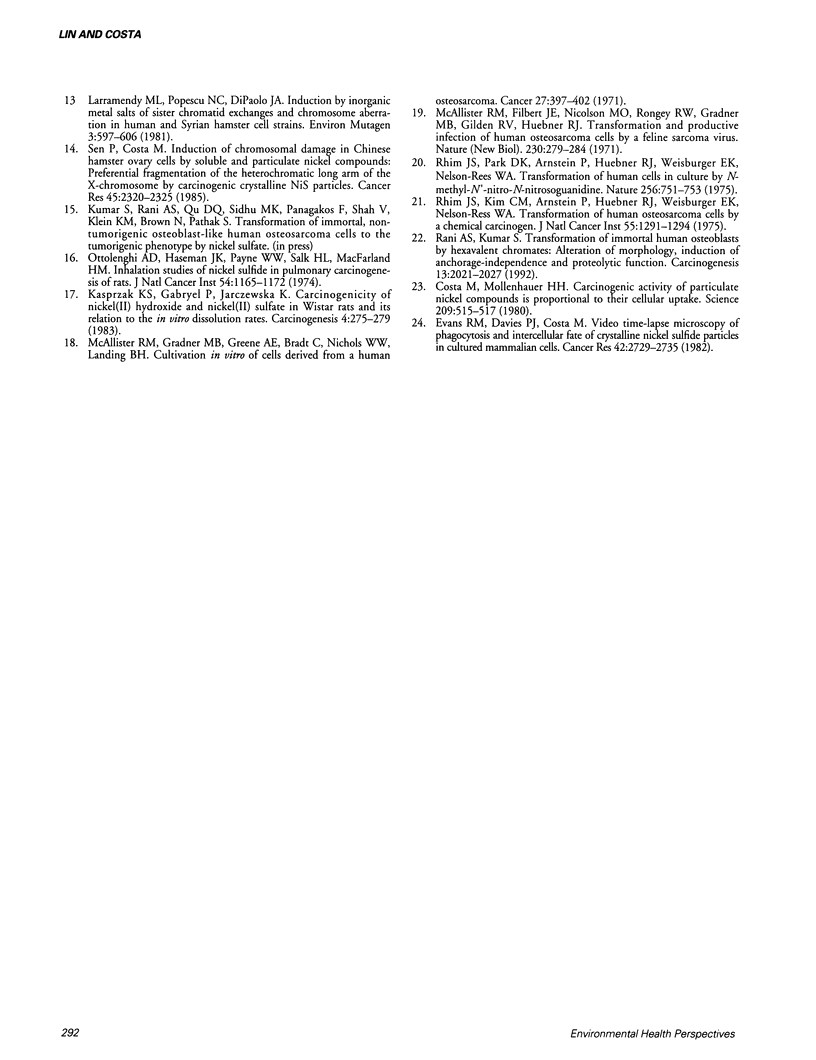
Images in this article
Selected References
These references are in PubMed. This may not be the complete list of references from this article.
- Ciccarelli R. B., Hampton T. H., Jennette K. W. Nickel carbonate induces DNA-protein crosslinks and DNA strand breaks in rat kidney. Cancer Lett. 1981 May;12(4):349–354. doi: 10.1016/0304-3835(81)90178-6. [DOI] [PubMed] [Google Scholar]
- Conway K., Costa M. Nonrandom chromosomal alterations in nickel-transformed Chinese hamster embryo cells. Cancer Res. 1989 Nov 1;49(21):6032–6038. [PubMed] [Google Scholar]
- Costa M., Mollenhauer H. H. Carcinogenic activity of particulate nickel compounds is proportional to their cellular uptake. Science. 1980 Jul 25;209(4455):515–517. doi: 10.1126/science.7394519. [DOI] [PubMed] [Google Scholar]
- Costa M., Simmons-Hansen J., Bedrossian C. W., Bonura J., Caprioli R. M. Phagocytosis, cellular distribution, and carcinogenic activity of particulate nickel compounds in tissue culture. Cancer Res. 1981 Jul;41(7):2868–2876. [PubMed] [Google Scholar]
- Damjanov I., Sunderman F. W., Jr, Mitchell J. M., Allpass P. R. Induction of testicular sarcomas in Fischer rats by intratesticular injection of nickel subsulfide. Cancer Res. 1978 Feb;38(2):268–276. [PubMed] [Google Scholar]
- Evans R. M., Davies P. J., Costa M. Video time-lapse microscopy of phagocytosis and intracellular fate of crystalline nickel sulfide particles in cultured mammalian cells. Cancer Res. 1982 Jul;42(7):2729–2735. [PubMed] [Google Scholar]
- Kasprzak K. S., Gabryel P., Jarczewska K. Carcinogenicity of nickel(II)hydroxides and nickel(II)sulfate in Wistar rats and its relation to the in vitro dissolution rates. Carcinogenesis. 1983;4(3):275–279. doi: 10.1093/carcin/4.3.275. [DOI] [PubMed] [Google Scholar]
- Lin X., Zhuang Z., Costa M. Analysis of residual amino acid--DNA crosslinks induced in intact cells by nickel and chromium compounds. Carcinogenesis. 1992 Oct;13(10):1763–1768. doi: 10.1093/carcin/13.10.1763. [DOI] [PubMed] [Google Scholar]
- McAllister R. M., Filbert J. E., Nicolson M. O., Rongey R. W., Gardner M. B., Gilden R. V., Huebner R. J. Transformation and productive infection of human osteosarcoma cells by a feline sarcoma virus. Nat New Biol. 1971 Apr 28;230(17):279–282. doi: 10.1038/newbio230279a0. [DOI] [PubMed] [Google Scholar]
- McAllister R. M., Gardner M. B., Greene A. E., Bradt C., Nichols W. W., Landing B. H. Cultivation in vitro of cells derived from a human osteosarcoma. Cancer. 1971 Feb;27(2):397–402. doi: 10.1002/1097-0142(197102)27:2<397::aid-cncr2820270224>3.0.co;2-x. [DOI] [PubMed] [Google Scholar]
- Miura T., Patierno S. R., Sakuramoto T., Landolph J. R. Morphological and neoplastic transformation of C3H/10T1/2 Cl 8 mouse embryo cells by insoluble carcinogenic nickel compounds. Environ Mol Mutagen. 1989;14(2):65–78. doi: 10.1002/em.2850140202. [DOI] [PubMed] [Google Scholar]
- Nishimura M., Umeda M. Inducation of chromosomal aberrations in cultured mammalian cells by nickel compounds. Mutat Res. 1979 Dec;68(4):337–349. doi: 10.1016/0165-1218(79)90166-6. [DOI] [PubMed] [Google Scholar]
- Patierno S. R., Costa M. DNA-protein cross-links induced by nickel compounds in intact cultured mammalian cells. Chem Biol Interact. 1985 Oct;55(1-2):75–91. doi: 10.1016/s0009-2797(85)80121-6. [DOI] [PubMed] [Google Scholar]
- Rani A. S., Kumar S. Transformation of non-tumorigenic osteoblast-like human osteosarcoma cells by hexavalent chromates: alteration of morphology, induction of anchorage-independence and proteolytic function. Carcinogenesis. 1992 Nov;13(11):2021–2027. doi: 10.1093/carcin/13.11.2021. [DOI] [PubMed] [Google Scholar]
- Rhim J. S., Kim C. M., Arnstein P., Huebner R. J., Weisburger E. K., Nelson Ress W. A. Transformation of human osteosarcoma cells by a chemical carcinogen. J Natl Cancer Inst. 1975 Dec;55(6):1291–1294. doi: 10.1093/jnci/55.6.1291. [DOI] [PubMed] [Google Scholar]
- Rhim J. S., Park D. K., Arnstein P., Huebner R. J., Weisburger E. K., Nelson-Rees W. A. Transformation of human cells in culture by N-methyl-N'-nitro-N-nitrosoguanidine. Nature. 1975 Aug 28;256(5520):751–753. doi: 10.1038/256751a0. [DOI] [PubMed] [Google Scholar]
- Sen P., Costa M. Induction of chromosomal damage in Chinese hamster ovary cells by soluble and particulate nickel compounds: preferential fragmentation of the heterochromatic long arm of the X-chromosome by carcinogenic crystalline NiS particles. Cancer Res. 1985 May;45(5):2320–2325. [PubMed] [Google Scholar]
- Sunderman F. W., Jr Carcinogenic effects of metals. Fed Proc. 1978 Jan;37(1):40–46. [PubMed] [Google Scholar]



